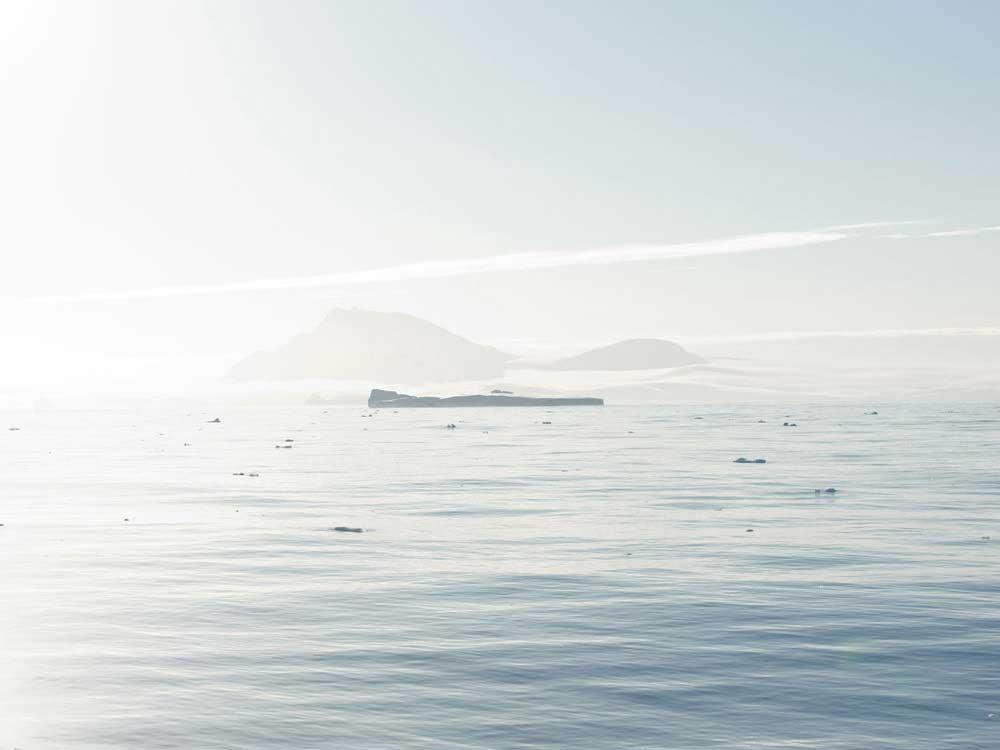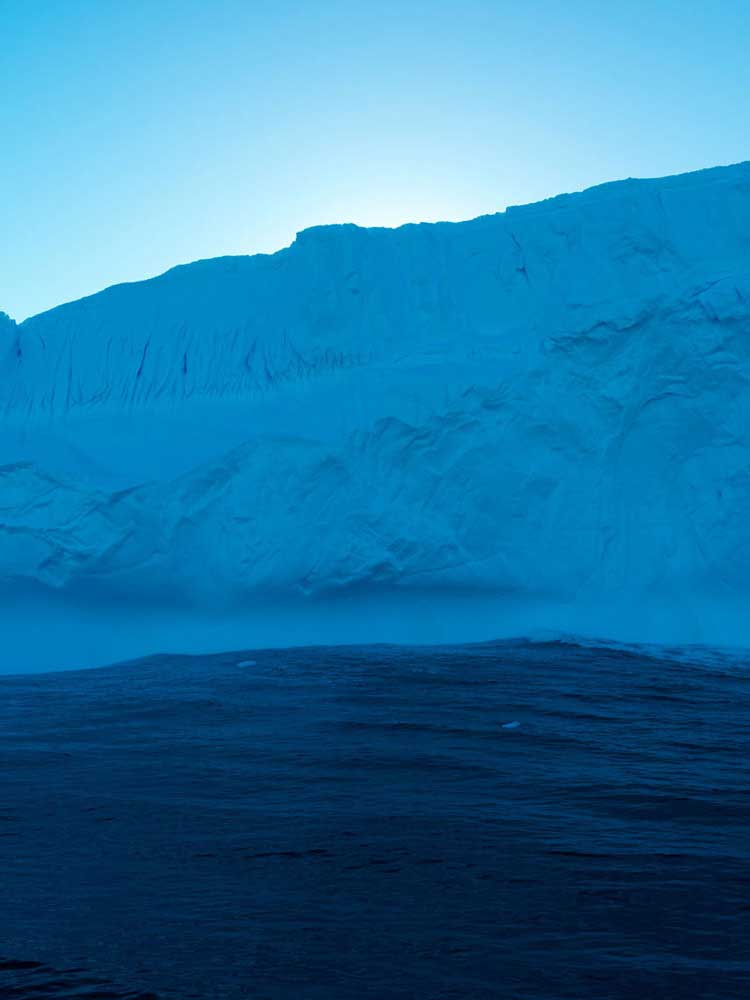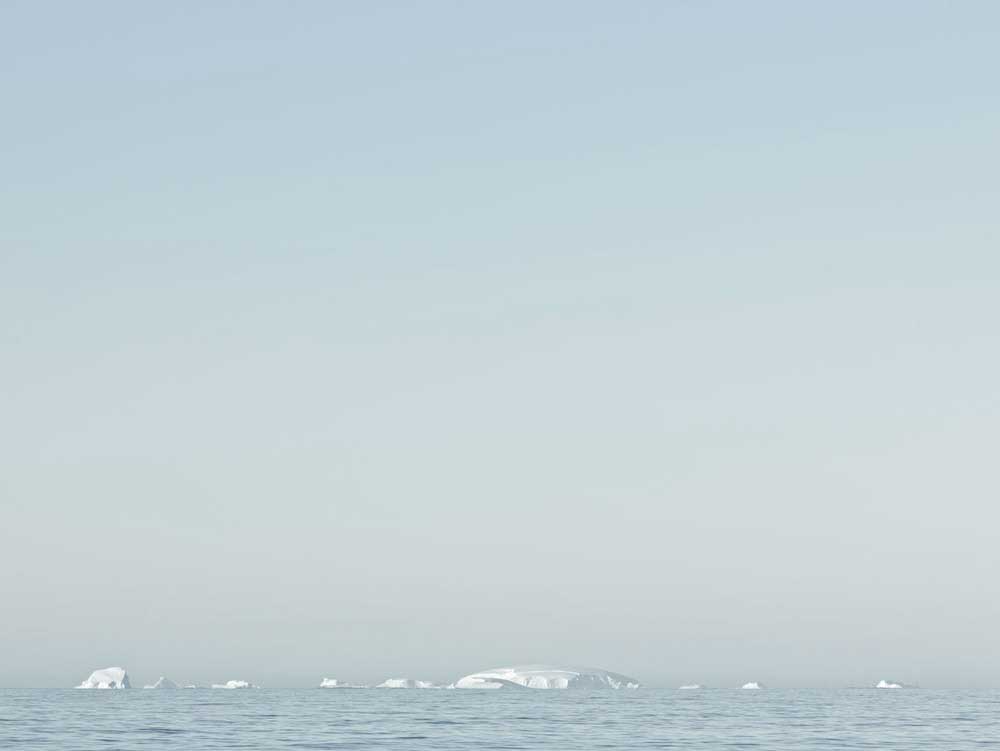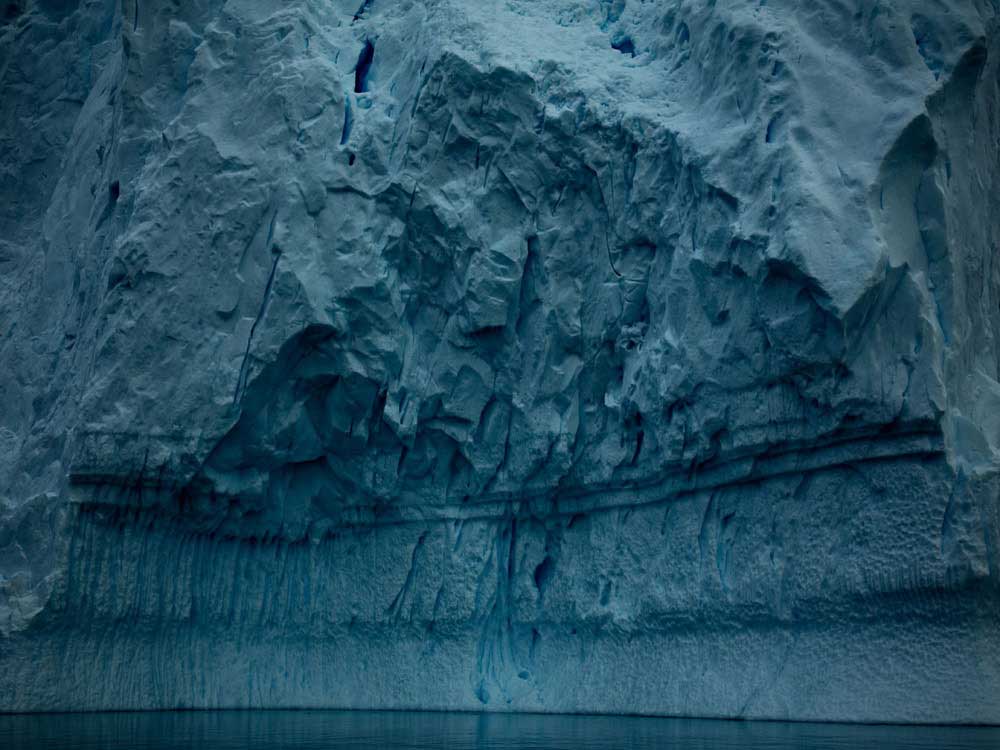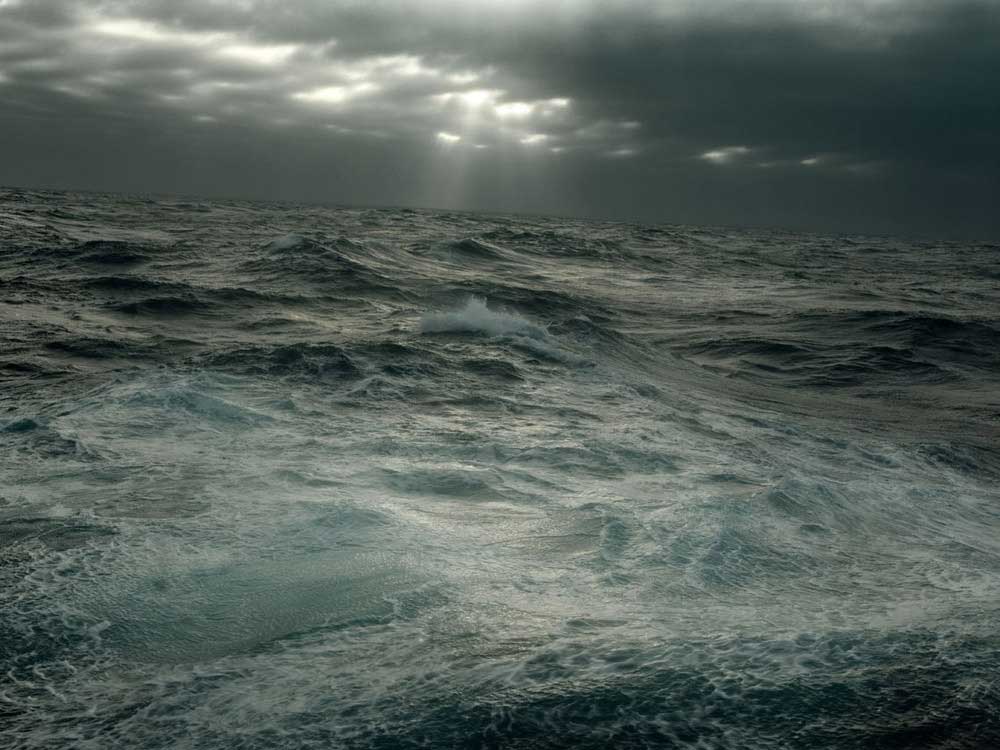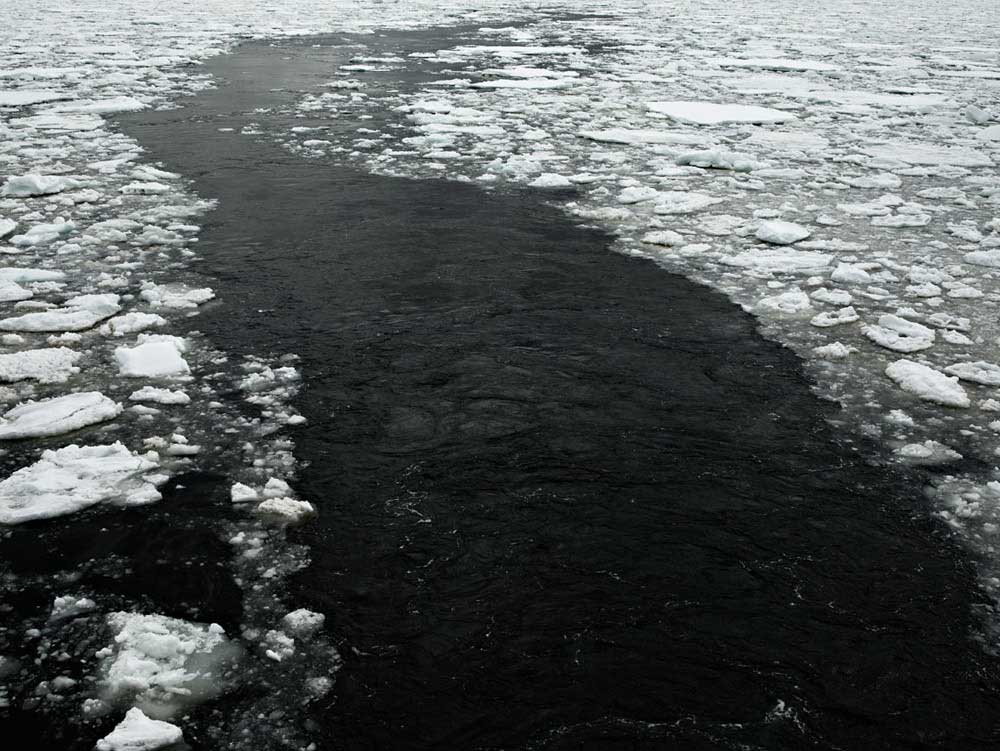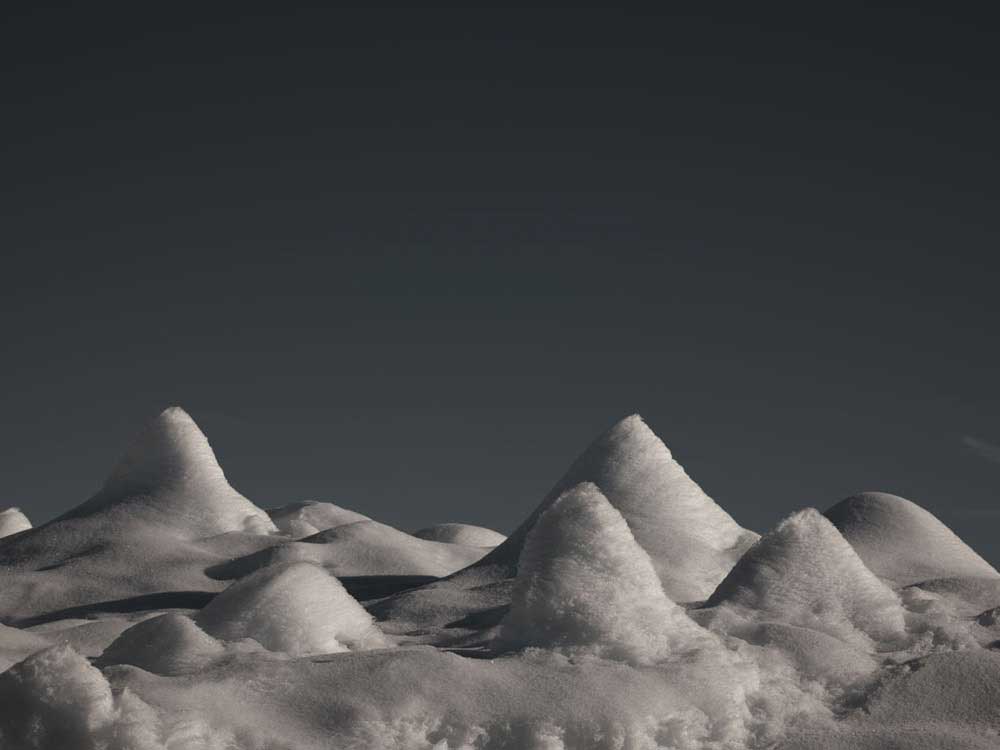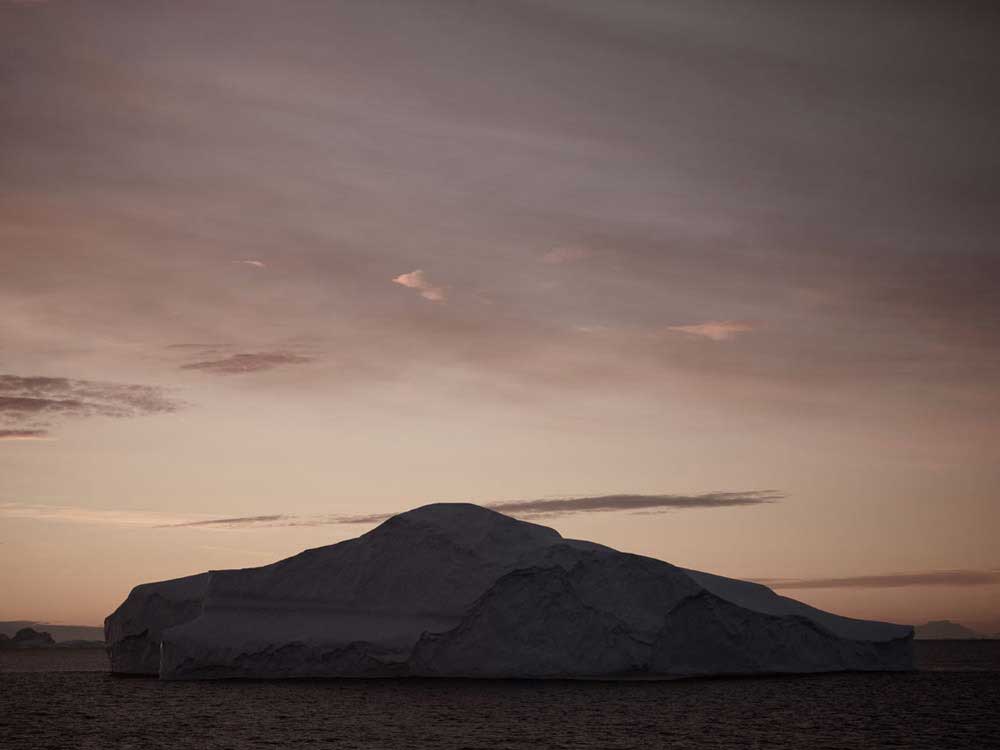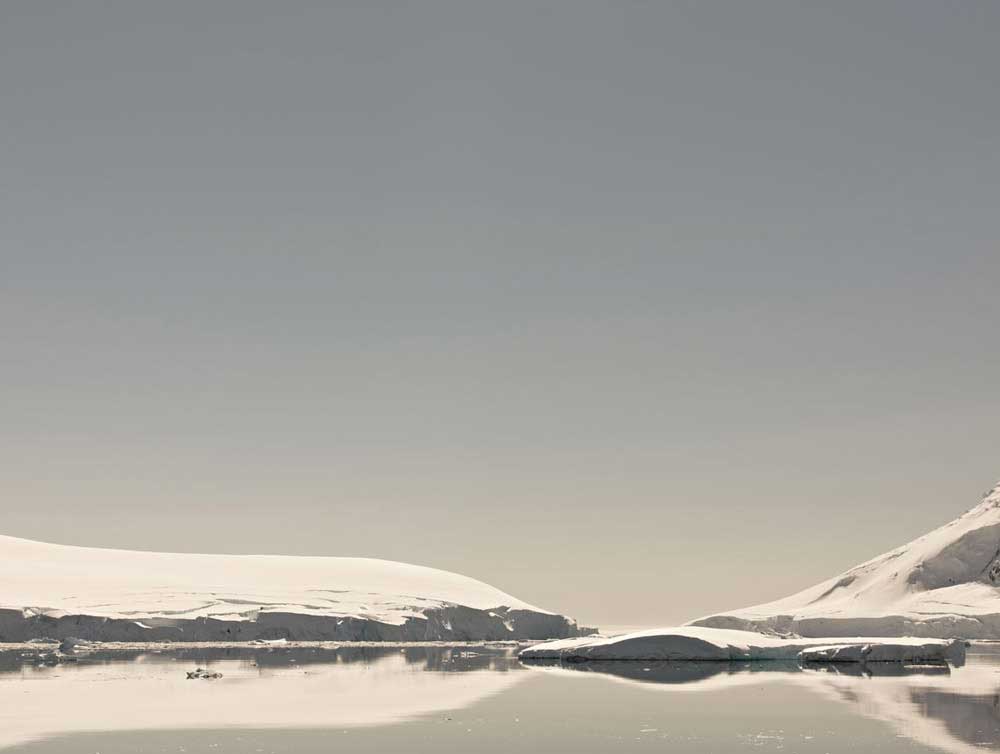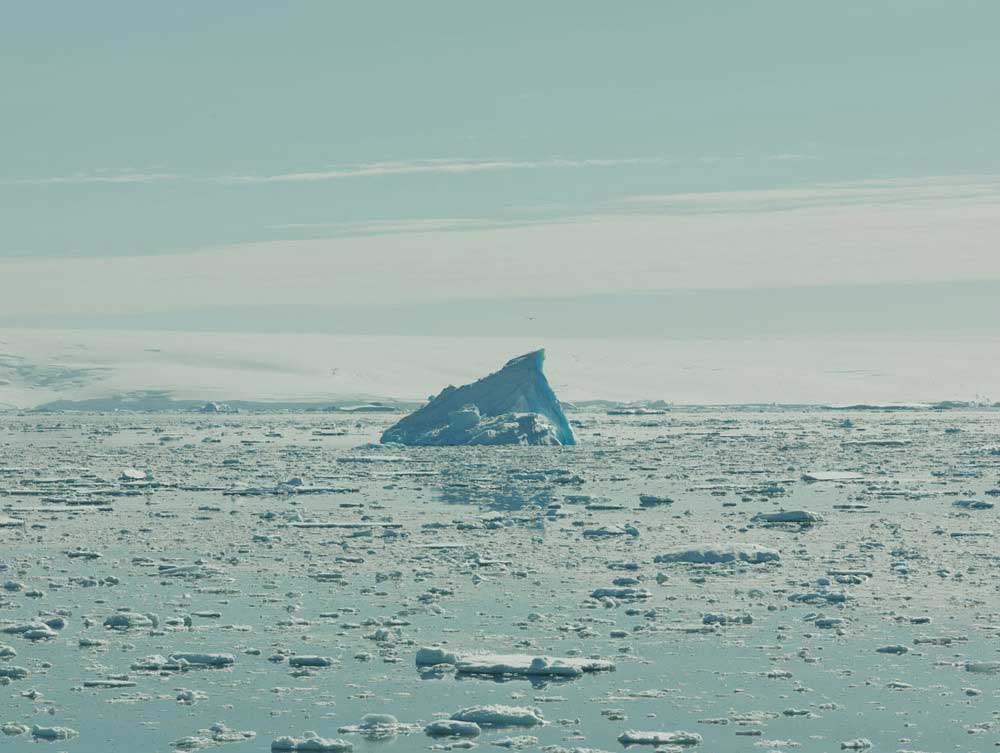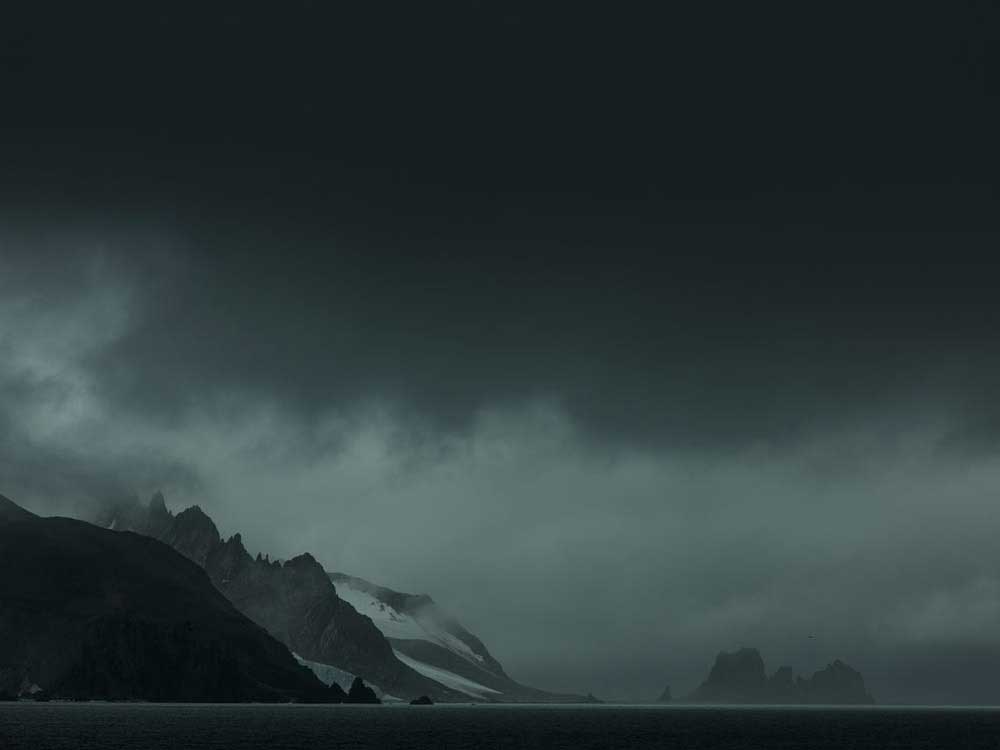“This experience has inspired images of absolutes.”
-Santiago Vanegas-
The photographic series entitled “Antarctica” by Santiago Vanegas attests to the moving experience the artist experienced during a journey across that frozen continent that is being subjected to a radical transformation.
Contrasting experiences coexisted during the trip. Just as Vanegas felt the immensity and strength of nature, as compared to the frailty of human beings, he also witnessed the fragility of the ecological equilibrium in the face of the arrogant behavior of mankind. According to the artist “Death and beauty” were the motivations behind his trip.
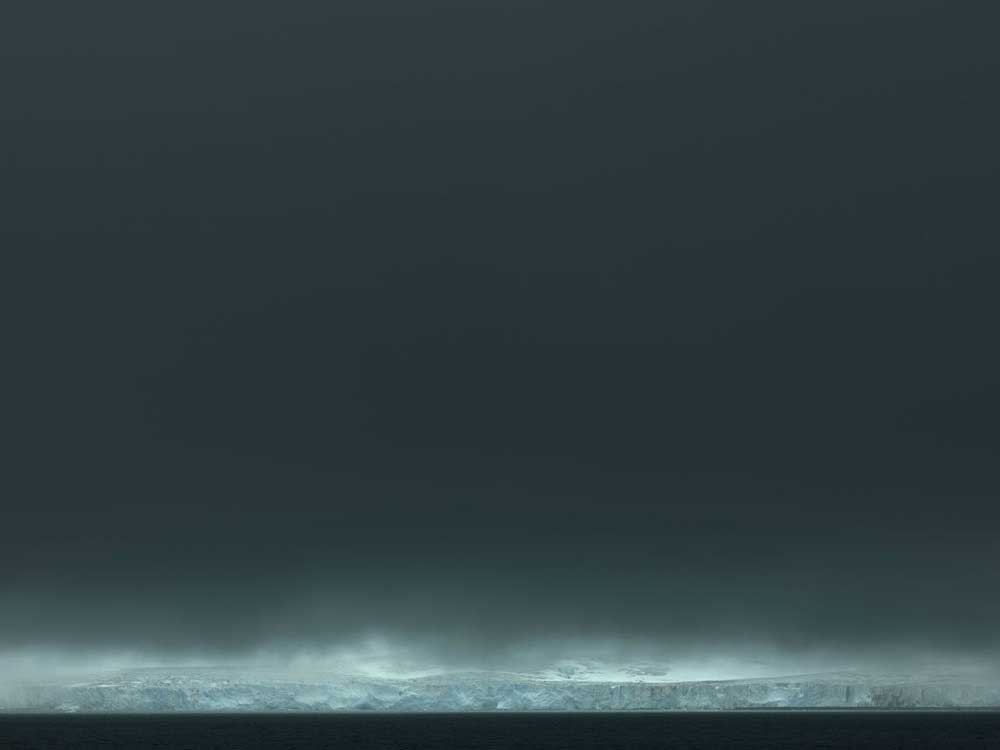
Vanegas’ photographs reveal a profound admiration for the natural landscape: enormous bodies of water, sometimes in a liquid state and other times completely frozen, expand under the light of a clear and changing sky. In most of his shots he avoids the presence of man; through his lens pure nature prevails. This wonder at the magnificence of the natural world has ties to the landscape genre spanning the history of art since the Sixteenth Century, particularly with the romantic landscape that evokes the conscience of modern man, the experience of modernity, and a feeling of the sublime.
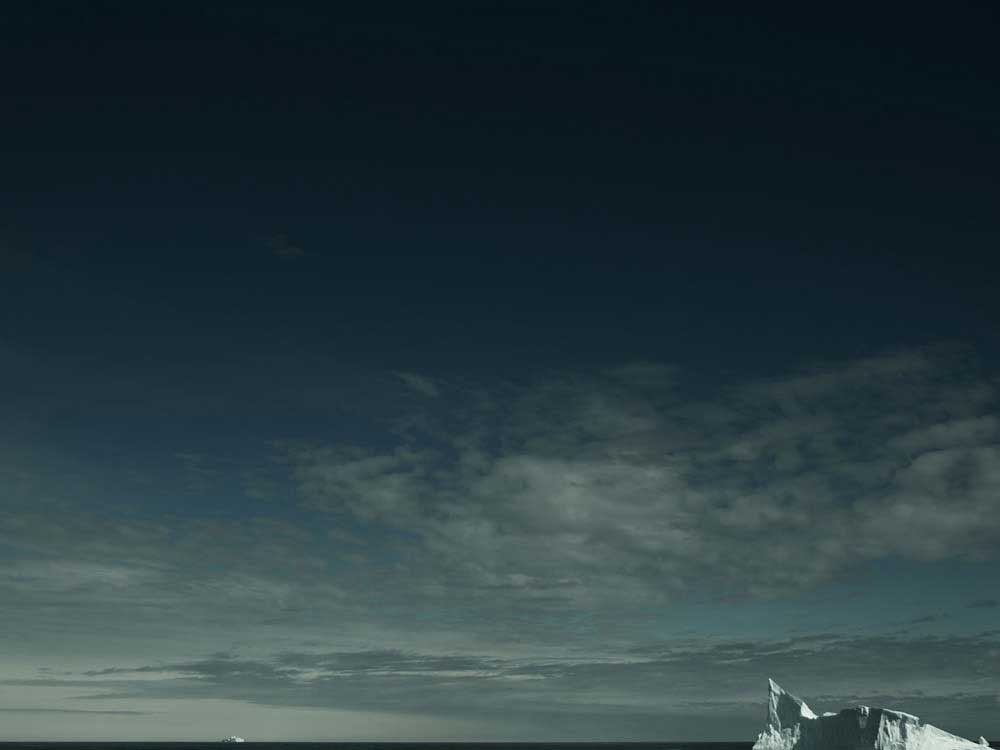
In their passage through life, the romantics also faced “death and beauty,” an experience that gave name to a profound and disturbing feeling: the sublime. Distancing themselves from the serene beauty of the Classical world they introduced a new aesthetic that incorporated the excessive, the obscure, perhaps even terror, into art. It was an aesthetic that found an echo in the manifestations of nature as in the night, the immensity of the sea or the mountains, the ferocity of animals, the menacing and unrepresentable. The philosophy of Burke and later Kant, during the century of the Romantics, established a category that went beyond the notion of “beauty,” of the pleasant, the proportioned and the pleasurable. The sublime in Romanticism acknowledges an internal shudder that is associated with contemplation and reflection; with reason, with the vital, but also with the finite, death, and pain. In the sublime pleasure and pain coexist.
A philosopher of our time, Jean-François Lyotard, finds that the sublime is precisely the type of sensitivity that characterizes the avant-garde.2 According to this philosopher, “For the last century, the arts have not had the beautiful as their main concern, but something to do with the sublime.” The sublime is for him, along the lines of Kant, “a disaster suffered by the imagination,” an impairment in our ability to shape experiences; a powerful feeling that affects the spirit and is tied to moral and ethical issues, to the unrepresentable.
The representation of the Classical landscape is associated with beauty, with meticulous observation—sometimes reverent, other times amazed—in which, according to Lyotard, “an agreement occurs between nature and the spirit.” In the case of Romanticism, the landscape painting acquires diverse connotations. Among other things, it responds to the experience of a new condition of life: modernity. Thought and modern ways of life begin to transform the world and to create a rift, a separation between man and nature. The painted landscape also responds to a state of mind experienced by man to his finite condition, to a profound reflection on mortality and the imminence of death; despite his longings for eternity. Thus the landscape is cohabited by pleasure and pain, death and beauty: the sublime.
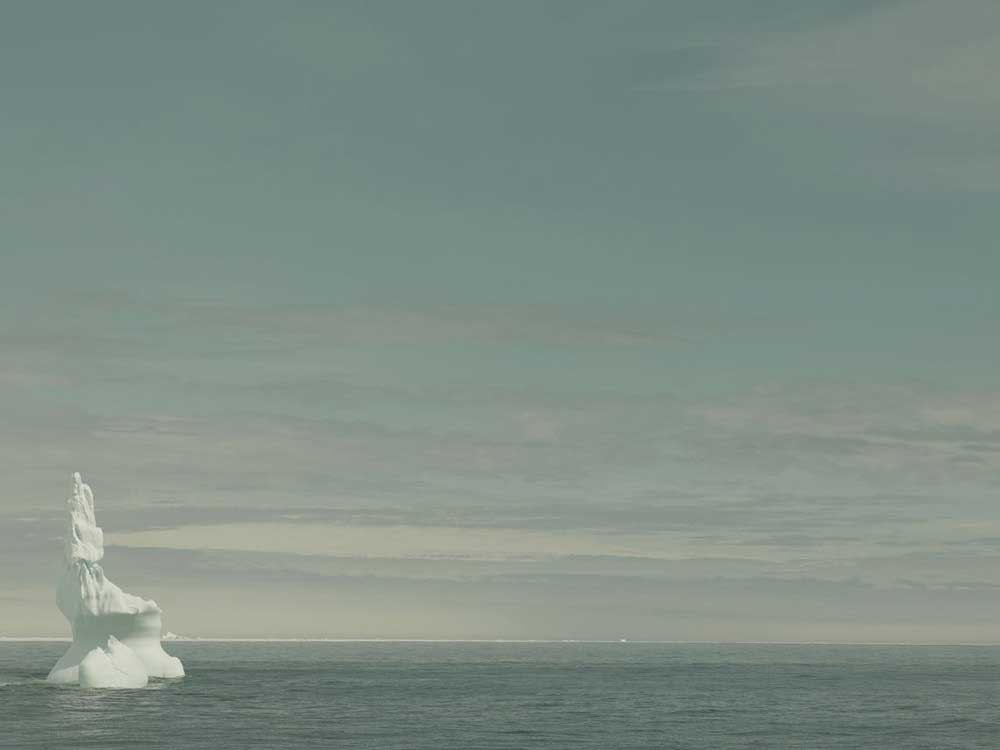
It is precisely this feeling that links Santiago Vanegas’ experience with the romantics. Getting to Antarctica involved a three day journey in a small boat that while crossing the terrible Drake Passage “was tossed by waves over twenty feet high.” A shocking experience, we might say terrifying, in which man and nature measured their strength. The image of the boat buffeted by an immense sea brings to mind the work of Turner, that artist who sought extreme experiences shutting himself up in darkness for long periods, to then forcefully open a window so the light would brutally flood the space and blind him. Or, on other occasions, he had himself tied to the mast of a ship in order to feel completely defenseless against the power of the rough sea. These were experiences that led to those landscapes where the light, turned into color, wipes across the world’s physiognomy giving away to atmospheric masses that proclaim abstraction: rough oceans, voracious fires and tumultuous skies like the many Santiago Vanegas recorded during his trip to Antarctica.
“Antarctica is a place where the miniscule and the monumental are mutually epic,” affirms Santiago Vanegas. This is perhaps the reason that his images sometimes show the vastness of the landscape, while focusing other times on details like the skeletal remains, the ripples created by a body of water, or the small detritus from gigantic frozen rocks. In the story that he has brought from his trip to Antarctica, where man must take care of his movements to avoid breaking its fragile ecology, we understand the value of the miniscule, that the tiny is in accord with the whole. When we look at a boat or a flag in the middle of a vast landscape, we understand the smallness of man as we do in “The Monk by the Sea” by Caspar David Friedrich. And in that experience, of the miniscule in contrast with the enormous, there is a certain pleasure, like the one when we experience, in the face of nature’s force, our infinite smallness and fragility, our mortality.
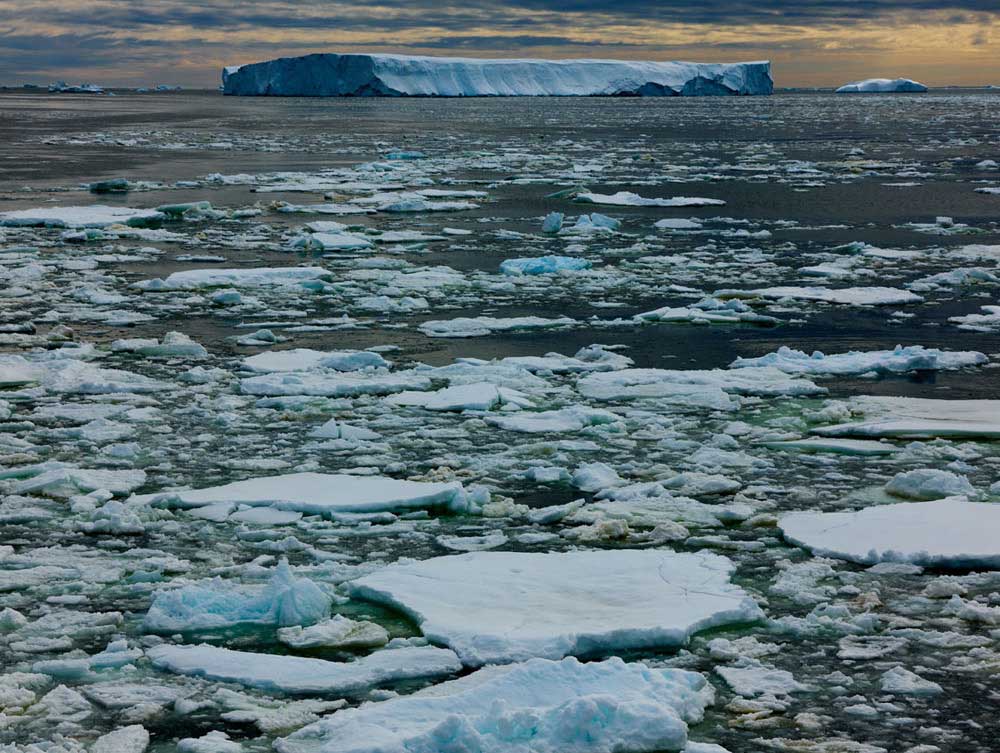
Vanegas also affirms that being in Antarctica “was like being on another planet but at the same time very close to Earth.” With these words he alludes to an experience that is totally alien to urban life, completely removed from the actions of mankind. Being “very close to Earth” is to be immersed in nature, in the natural world, in the most primal sense. This reminds me of the paintings of Friedrich, an artist who felt that human reason, in its drive to dominate, turned nature into an object of study, and established a distance with it that is both unbridgeable and ominous. In Friedrich’s Wanderer above the Sea of
Fog, a man—a modern subject, with his back to the viewer ad wearing urban clothing—contemplates the vastness of the landscape; contemplation is the only link that remains with nature. Friedrich’s soul was torn by the divide, he found it insurmountable and this separation became the subject of his landscapes, which he created with s religious fervor. Santiago Vanegas appears to have managed to bridge the gap between man and nature, intensely experiencing the natural condition of the planet, one of its few unspoiled regions, however threatened.
Many differences separate the century of the Romantics from our present. Men of the Nineteenth Century barely glimpsed the consequences of the new relationship established by the modern subject’s will-to-know regarding nature. The Romantics, torn—unlike us— by the divide, fully trusted in the strength and infinity of the natural world. Friedrich lamented this condition. Turner’s powerful landscapes celebrated the power and strength of the raging sea, as well as the powerful transformations of light that seem to devour the world. A man like Constable was enraptured by aqueous cumulus clouds, clouds floating in the sky changing shades of color and acquiring different forms.
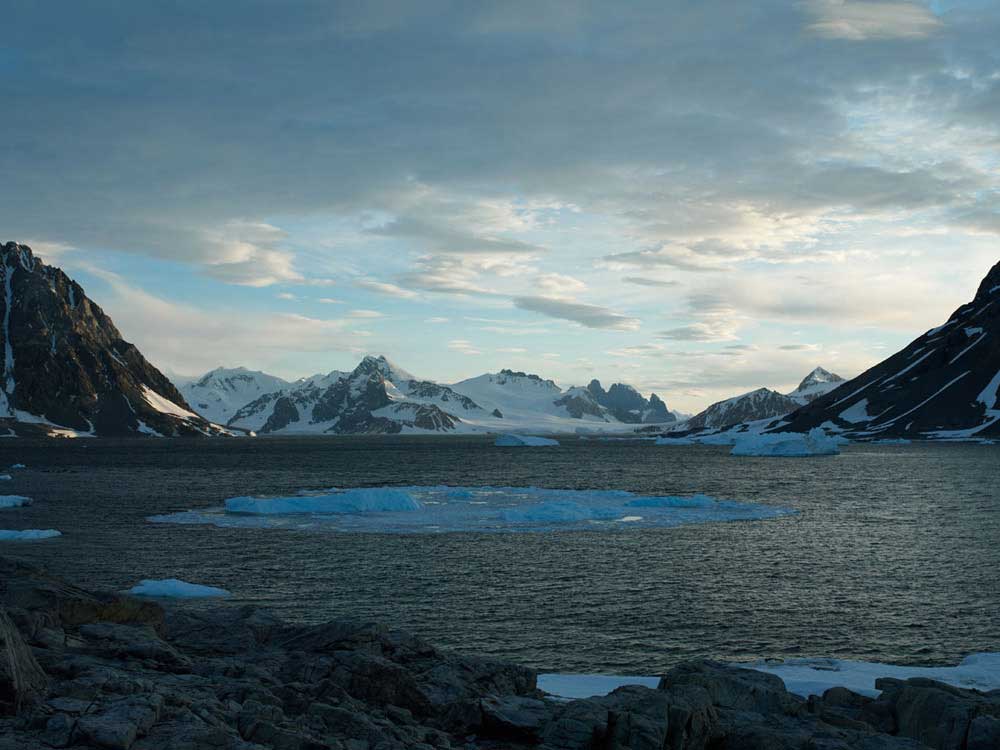
In this century, when technology has reduced distances taking communications to unsuspected, almost exasperating, levels, and capital overrides all other values, we are certain of the finiteness of natural species. With global warming we are now experiencing the consequences of this direction which, in the Antarctic, as Santiago Vanegas points out, has melted huge blocks of ice that are discharged into the ocean. As result, the lives of the species that inhabit this aquatic continent have been endangered. Disaster and death are part of their future.
The beautiful images of Antarctica preserve the magnificence of this vast natural landscape condemned to extinction. Just as light lends color to these vast and absolutely white surfaces, Santiago Vanegas, with careful digital color management, intensifies his experience of the sky, the mounds of ice, and of the sometimes dark, sometimes almost white waters. Santiago
Vanegas says that the landscape is like a blank canvas that gradually changes color with the change of light, and that he, as painters do with their pigments and brushes, as a photographer of today who uses digital media, alters images through a slow and complex process that has separated photography from the snapshot and from a certain “truth.” On the other hand, this approach has taken him closer to painting, to that slow and laborious time in where shades are darkened or lightened and colors become warmer or cooler, depending on the artist’s feeling and intention.
For these reasons—of conscience, feeling, and laboriousness—these images created with the cutting edge technology of our time, are closer to the romantic landscape, to the drama that is part of it, and to the paintings of those artists who, passionate about nature, came to lament the terrible rift— created through the perverse misuse of knowledge and information—that modernity established with the natural world.
Vanegas’ photographs attempt “to make sublime situations perceptible (…) like an absolute (…) in magnitude or power.”4 One of the most compelling photographs in the series happens to be the first photograph he took upon seeing Antarctica. It is an image with no discernible forms, only vast grey and white areas that extend horizontally. At the top, a dark surface, a sky that appears to have been painted with Rothko’s translucent layers of paint, covers almost the entire image, as also happens in Friedrich’s Monk by the Sea. At the bottom there is a faint white stripe, a misty line like those created by Rothko; under it a darker one: the ocean. This powerful image has the character of an overture, capturing the first moment of the encounter between the photographer and the continent of frozen water, after a journey that put his life at risk.
In this first image that the experience that “caused a disaster” in the photographer’s imagination appears before our eyes. Like others, this picture brings us closer to that feeling that deeply effects the spirit and that makes the absolute, the unrepresentable, resonate. [Text: Marta Rodríguez]
About Santiago Vanegas
Santiago brings an interesting set of aesthetics to his work. He has navigated in and out of two cultures throughout his life. Born in Philadelphia and then moving back and forth between the United States and his native country of Colombia, eventually staying in Colombia for the next 14 years. Inspired by his mother, a painter, Surrealist art, Latin American magic realism, music, and the world of cinema, Santiago creates work that looks at the dark and the light in life. “I see the world in a way that even to me is a bit strange, but very real. The world is a strange, complicated, and fascinating place. I’m constantly drawing metaphors of how I see the world and its future. My images are about the relationship between reality and perception.”
His work has been featured in Surface Magazine, WIRED, Flaunt Magazine, TALLULAH Magazine, HEDGE Magazine UK, Featherstitch Avenue, Picture Magazine, GRAPHIC Magazine UK, Hartsfield Jackson Atlanta International Airport, Lenscratch. Santiago is also principal photographer at featherstitchavenue.com. Santiago is currently based in Atlanta, GA. [Official Website]
